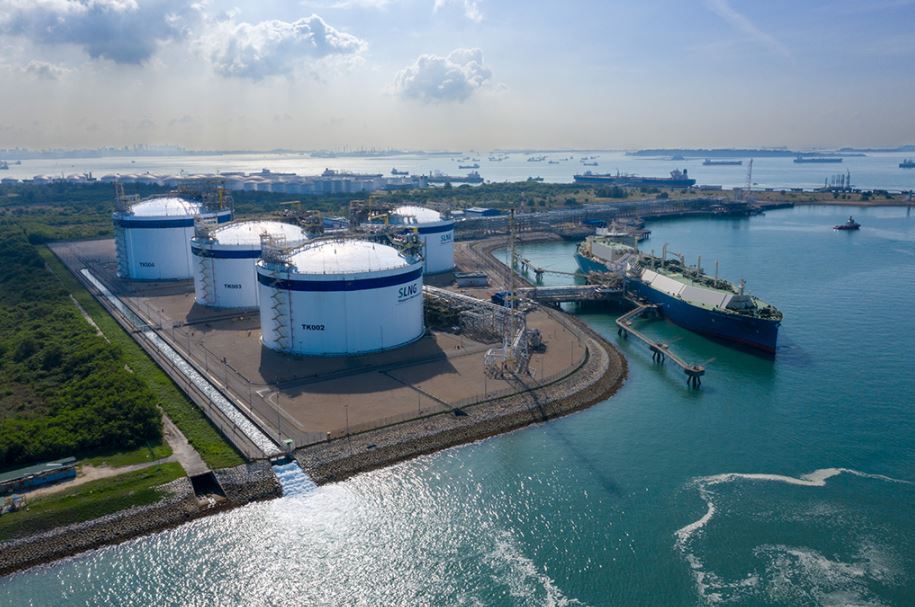Singapore LNG is joining forces with a unit of Linde to look into building a carbon dioxide (CO2) liquefaction and storage facility located adjacent to its LNG import terminal on Jurong Island.
In that regard, SLNG and Linde Gas Singapore have signed a memorandum of understanding to explore the feasibility and development of the new facility, according to a statement on Monday.
Broadly, the project concept involves using cold energy from the SLNG terminal’s operations to liquefy CO2, leveraging on Linde’s and SLNG’s combined expertise in carbon capture, liquefaction, as well as cryogenic storage and handling solutions, the statement said.
The duo would store liquefied CO2 (LCO2) in tanks onsite before transporting it for end use.
If feasible, this could be the first such facility of its kind in Singapore and the region, where the partners would utilize the existing cold energy from SLNG to liquefy CO2, thereby directly capturing CO₂.
Initially, the project would target to liquefy, store and transport CO₂ for the project partners.
However, the partners said they could potentially scale it up in the future to handle CO2 from more sources, with an open-access, multi-user concept, the statement said.
“Energy security has been and continues to be of utmost importance to SLNG. At the same time, it is also our vision to catalyze new possibilities in the energy transition and this includes supporting new solutions for a lower carbon future, in step with the government’s Singapore Green Plan 2030,” Tan Soo Koong, CEO SLNG, said,
“This project allows us to realize SLNG’s cold energy recovery objectives with a two-fold benefit – cold energy recovery with high efficiency, as well as effective liquefaction and storage to reduce CO₂ emissions,” he said.
Several new developments
SLNG has this year revealed several new developments, including building a natural gas liquids (NGL) extraction facility with Keppel and a green modular data center system.
The 11 mtpa LNG terminal has also earlier this year received new solar systems on the rooftops of several buildings.
Singapore’s first and only LNG terminal currently operates with four tanks for a total storage capacity of 800,000 cubic meters.
SLNG’s facility features two jetties able to accommodate the world’s largest LNG tankers.
Moreover, the second jetty is able to receive and reload small LNG ships of up to 10,000 cubic meters in capacity.
The terminal also has a third jetty designed for 10,000-40,000 cbm LNG carriers but only with civil structure completed.

